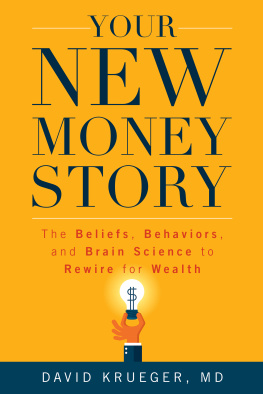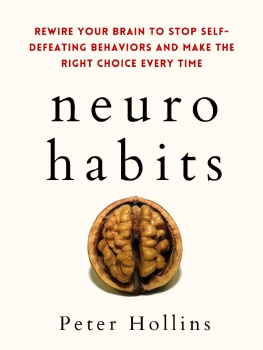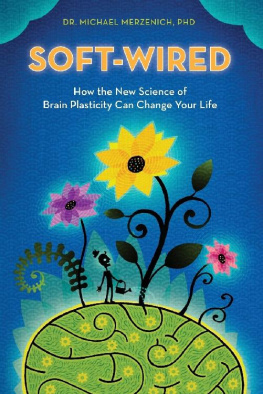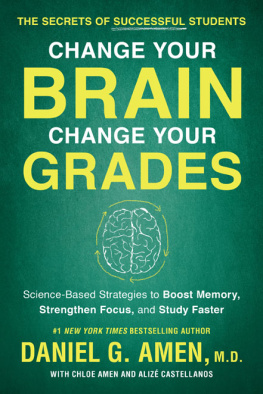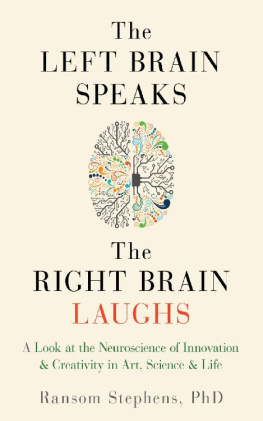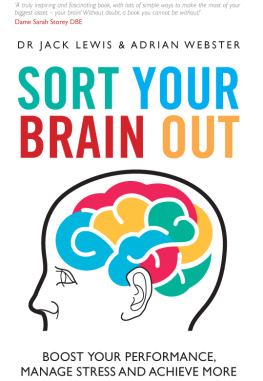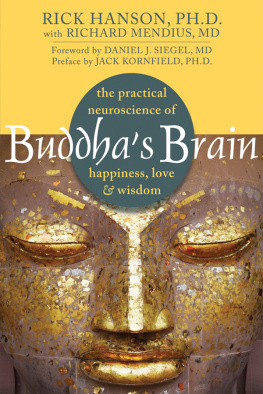
USE NEUROSCIENCE TO LIVE, LOVE, AND LEAD A BETTER LIFE
By
DAVID C WINEGAR
Original Artwork by Kati Immonen
Copyright 2018 David C Winegar
All rights reserved.
ISBN 978-952-94-1226-6 (paperback. color)
ISBN 978-952-94-1227-3 (PDF)
ISBN 978-952-94-1228-0 (EPUB)
ISBN 978-952-94-1229-7 (mobi)
ISBN 978-952-94-1464-2 (paperback, black and white)
ISBN 978-952-94-1465-9 (mp3)
DEDICATION
I would like to dedicate this book first to my family for their support and encouragement in taking on this project.
I would also like to thank all the neuroscientist researchers who I know have made significant personal sacrifices to bring us insights into our brains. They are remarkable, and I would like to extend my gratitude to them for their hard work and dedication.
Lastly, I would like to thank all my supporters on Publisizer who inspired me to make this book the best it could possibly be. My sincere thanks go out to each one of you:
Jen Bell, Marina Dieck, Jacek Franuz, Ekaterina Frolova, John Garner, Michael Green, Josef Gross, Thomas Gylling, Nora Hrme, Ruedi Habermacher, Minna Hyvtti, Kati Immonen, Pekka Innanen, Pirjo Jskelinen, Deb Johnson, Anneli Karlstedt, Markku Leskinen, Leena Liimatainen, Patrik Lundbaeck, Jukka Mki, Ludger Marekwia, Telmo Marques, Sabit Nasretdin, Carol Nycklemoe, Kimmo Nyman, Shyam Pathak, Richard Pyle, Heikki Rannikko, Lukas Renlund, Mark Rufer, Cindy Shi, Tracy Stevenson-Olson, Miia Taanila, Marjatta Takala, Giovanni Vaccaro, Jaakko Vilen, Alan Winegar, Bradford Winegar, Deanna Winegar, Charles Winegar.
A special thank you to Tuomas Saastamoinen and Thomas Gylling at Konecranes for their corporate sponsorship and support of my work.
Table of Contents
Preface
How to use this book
SIMPLICITY = BEAUTY
INTRODUCTION
YOUR BRAIN PREFERS TO THINK IT IS 4000 B.C.
Two systems make up your brain
Your Lizard Brain (S1)
Your Logical Brain (S2)
Your brain is a crystal ball
S1 prioritizes emotion over logic
Our world has changed, but our brains have not
100 millisecond judgments
Everyone has an individual view of the world
Priming the brain for experience
Culture embeds experience
Training yourself to be situationally aware
Understanding our memory
Three paths to better memory retention
Your brain seeks to habituate
The habituation proof presentation formula
The impact of stress and emotion on memory
The myth of learning styles
Can we trust our memories?
Sleep and memory
Gut feelings are real
YOUR BRAIN AVOIDS THINKING
You S2 Brain is a limited resource
Exploitation vs exploration and its Impact
Labeling Emotions
YOUR BRAIN IS REWARD-DRIVEN
Anticipation is a strong reward in itself
The role of reward in learning
Intrinsic and Extrinsic Reward
Reward must be greater than pain
YOUR BRAIN IS WIRED FOR SOCIAL CONNECTION
Our perceived reactions to fear drive interactions
Fight-or-flight impacts our health
Understanding stress
Uncertainty is the most dangerous stressor
Stress makes us stupid
Stress reduction through altered brain networks
The chemical of tend and befriend
Oxytocin and our significant other
Oxytocin and pets
The role of oxytocin in modern social bonding
Oxytocin and work relationships
Trust the cornerstone of psychological safety
Testosterones impact on oxytocin
Oxytocin is not purely positive
The power of mirror neurons to drive relationships
Conversational intelligence the key to brain synchronization
Gratitudes Role in living better
Benefits of Practicing Gratitude
YOUR BRAIN IS PLASTIC
Our first understandings of the brain
The history of neurogenesis
Proof of plasticity
How to stimulate new brain connections
The brains need to remove connections
Breaking habits by pruning connections
Time to get in the game
Epilogue
Bibliography
Preface
We are at a remarkable time in human history where the black box that is our brain is giving up its secrets. For the 40 000 years the modern human mind has existed (Simon Neubauer 2018), it has mostly been an enigma. We knew very little about the actual workings of the brain, and we struggled to understand the processes influencing our behavior. We are now moving out of a dark age into a period of enlightenment a period of rapid and bountiful discovery led by technological advances and a 50 000-strong army of neuroscientists.
Neuroscience is responsible for the study of the structure and function of the nervous system and brain. Neuroscientists are exploring the workings of our minds in numerous fields, from the study of neurological disorders to consumer marketing, helping us to understand the origins and drivers of our behavior.
This new body of research has emerged only in the last 20 years. It is the direct result of advancements in brain imaging made possible through the invention of new brain imaging technologies such as the functional magnetic resonance machine (fMRI) machine.
My goal in writing this book is to help you understand the latest neuroscience studies. I want to open your eyes to what the research is telling about your brains and help you use this knowledge to live, love, and lead your life to the fullest.
Some might consider this a self-help book, but I dislike the term, because books in this category are so often pitched as a magic bullet to how to be better. I wont give you the three steps to a better life. What I will give you is science-based insight into how your brain works and the implications for your life.
Admittedly, the science this book is based on is complicated. What makes the science difficult is the overwhelming amount of terminology. To help make the science more accessible, I have chosen not to go too deep into the scientific jargon. It is not my intention to dumb-down this book but to make this more accessible by explaining the concepts without the use of all the heavy words.
When we understand our brains better, we have the power to move our lives in new directions. Our minds are remarkable in their ability to create new connections, process large volumes of information, automate complicated tasks, and acquire exceptional new skills.
By embracing the research, we open ourselves to new possibilities. Possibilities which can profoundly impact how we live and interact with others, orientating our brains to work in ways better in sync with how they have evolved. We can learn to hack our brains and maximize their potential for greatness.
How to use this book
If wisdom is organized life and science organized knowledge, art is organized beauty
Immanuel Kant
I wrote this book to inform, enlighten, and inspire you to use neuroscience to improve your understanding of yourself and others. It is not a traditional self-help book. It is not a simple three-step method, but a book that will take you inside your mind and provide insight into what motivates your behavior. By understanding what triggers certain behavior, you gain the ability to control and change it and the possibility to influence others.
The brain is infused with emotion, and I aspired to make emotion more than words on paper with this book. I have worked with a professional watercolorist, the brilliant Kati Immonen, to produce the original artwork for this book.
The artwork serves as a symbol of the section it proceeds, not literal. The art does not represent parts of the brains or brain systems, but is here to stimulate your mind, to activate emotions and help you feel some of what is going on in your brain every moment of your life as you experience new things.
Next page

